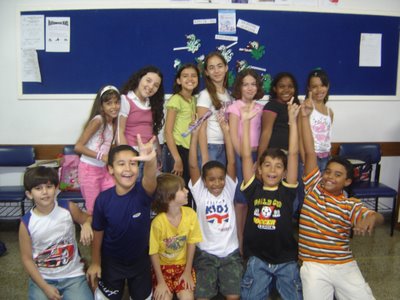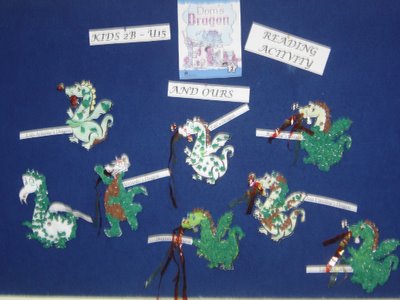Party of the Bonfim (Lavagem do Bonfim)

The Party of the Bonfim or “Lavagem do Bonfim” is a religious celebration that takes place in Salvador, Bahia, Brazil. It happens on the second Thursday after the Epiphany, in the month of January. Teodósio Rodrigues de Faria, an officer of the Portuguese Army, brought from Lisbon an image of Christ, which, in 1745, was taken with great accompaniment to the church of Penha, in Itapagipe. The party begins in the morning with a traditional parade of women dresses in typical clothes (Baianas) from the Church of Nossa Senhora da Conceição da Praia, and then they wash with brooms and perfumed water the staircases of the Church of Nosso Senhor do Bonfim. This annually congregates thousands of loyal officers in search of the protection of perfumed waters to cleanse the body and the soul. This party is very important for the people in Bahia, and they show the faith that they have in Nosso Snhor do Bonfim.
Vanessa and Michielle
Day of the Dead (Día de los Muertos)

The Day of the Dead (Día de los Muertos) is an ancient Aztec celebration in memory of deceased ancestors, celebrated on November 1 (All Saints' Day) and November 2 (All Souls' Day).
The holiday is especially popular in Mexico, where it is a national holiday, and is celebrated in the Philippines, in Mexican-American communities in the United States, and to a lesser extent in other Latin American countries.
Plans for the festival are made throughout the year, including gathering the goods to be offered to the dead. During the period of October 31 and November 2, families usually clean and decorate the graves. Most visit the cemeteries where their loved ones are buried and decorate their graves with ofrendas, or offerings, which often include orange marigold called Flor de Muerto, Spanish for "flower of the dead". Toys are brought for dead children (los angelitos, or little angels), and bottles of tequila, mezcal, pulque or atole for adults.
A common symbol of the holiday is the skull (colloquially called calavera), which celebrants represent in masks, called calacas (colloquial term for "skeleton"), and foods such as sugar skulls, which are inscribed with the name of the recipient on the forehead. Sugar skulls are gifts that can be given to both the living and the dead. Other holiday foods include pan de muerto (or "bread of the dead"), a sweet egg bread made in various shapes, from plain rounds to skulls and rabbits often decorated with white frosting to look like twisted bones.
The day of the Dead is a happy day.
Fernando

 *On behalf of Teacher Maria Rita
*On behalf of Teacher Maria Rita
 The Party of the Bonfim or “Lavagem do Bonfim” is a religious celebration that takes place in Salvador, Bahia, Brazil. It happens on the second Thursday after the Epiphany, in the month of January. Teodósio Rodrigues de Faria, an officer of the Portuguese Army, brought from Lisbon an image of Christ, which, in 1745, was taken with great accompaniment to the church of Penha, in Itapagipe. The party begins in the morning with a traditional parade of women dresses in typical clothes (Baianas) from the Church of Nossa Senhora da Conceição da Praia, and then they wash with brooms and perfumed water the staircases of the Church of Nosso Senhor do Bonfim. This annually congregates thousands of loyal officers in search of the protection of perfumed waters to cleanse the body and the soul. This party is very important for the people in Bahia, and they show the faith that they have in Nosso Snhor do Bonfim.
The Party of the Bonfim or “Lavagem do Bonfim” is a religious celebration that takes place in Salvador, Bahia, Brazil. It happens on the second Thursday after the Epiphany, in the month of January. Teodósio Rodrigues de Faria, an officer of the Portuguese Army, brought from Lisbon an image of Christ, which, in 1745, was taken with great accompaniment to the church of Penha, in Itapagipe. The party begins in the morning with a traditional parade of women dresses in typical clothes (Baianas) from the Church of Nossa Senhora da Conceição da Praia, and then they wash with brooms and perfumed water the staircases of the Church of Nosso Senhor do Bonfim. This annually congregates thousands of loyal officers in search of the protection of perfumed waters to cleanse the body and the soul. This party is very important for the people in Bahia, and they show the faith that they have in Nosso Snhor do Bonfim. The Day of the Dead (Día de los Muertos) is an ancient Aztec celebration in memory of deceased ancestors, celebrated on November 1 (All Saints' Day) and November 2 (All Souls' Day).
The Day of the Dead (Día de los Muertos) is an ancient Aztec celebration in memory of deceased ancestors, celebrated on November 1 (All Saints' Day) and November 2 (All Souls' Day).